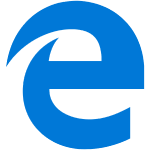How to Conduct a Successful Job Search in 5 Steps
By The Career Success Team

At Fullstack Academy, we’re focused on what matters most—getting you your dream job as a software engineer.
Your job is a significant aspect of your life, where you commit time, energy, and honing skills in service of a mission you resonate with, so it’s important to find the right company and role.
Fullstack’s Career Success Team helps hundreds of students get amazing jobs in tech each year—we know what leads to success. The following are the essential points, from start to finish, when searching for your next amazing role.

Step One: Figure Out What You Want
Start by thinking about what exactly you’d like to be doing and where you want to do it. Finding your purpose helps you focus on goals and desires that lead to a personal vision.
Every step along the way, from résumés and cover letters to the questions you ask at the end of interviews will require tailoring and thinking ahead.
Now is also the time when you should start objectively thinking about salary.
Conduct various online searches to see what people with your skill set and your desired job title make. Form an educated, realistic range of what you could make and put your ideal number in the middle.
Have a range ready for your first conversation. If it doesn’t come up in the interview, ask directly. This will ensure you are in the same compensation ballpark as you progress through the interview process.

Step Two: Make Connections
If you see an opening you want on a company website, invest time to look for connections. Search for connections on LinkedIn—ideally first-degree, but second-degree connections can also lead to introductions.
Keep in mind, the connections you make during the software immersive program at Fullstack or Grace Hopper will stick with you throughout your career and can be a great resource when you're looking for a new role.
Start a conversation and exhibit your enthusiasm and knowledge about the company from the first impression.
This introduction, whether it’s coming from you or another person, should be meaningful but also straight to the point.

Résumé Tips
- For companies you have a strong interest in, invest time to tailor your résumé.
- Read the job description carefully. Make sure your bullet points clearly and directly address the primary qualities listed.
- If you’re worried your experience doesn’t perfectly match up with the role, highlight transferable skills from your previous jobs that directly pertain.
- Don’t include a “Mission Statement” or “Career Objective” unless you’re a career transitioner or applying for a senior position.
Cover Letter Tips
- This is your opportunity to show how your passions align with the company’s objectives.
- Cover letters should be short—three paragraphs tops. You can’t assume recruiters or HR personnel will look at your cover letter first, but if you make it past a résumé screening, here’s where you will make your case.
- Make a template! A general guide to follow is: why you’re interested in the company and role, why you’re a unique fit for the position, and your contact information with a call to action.
- Include your contact information on your cover letter.

Step Three: Phone Interview Prep
Why do you want to work for this company? Why are you a good fit for this role?
You might have been practicing your pitch and interview responses in a general way up to this point. When the phone interview arrives, it’s now time to tailor your answers to the specific company you’re talking with.
Pinpoint the top three or four requirements from the job listing that best match your skills/experience and make a concerted effort to showcase them and have examples from your experiences and project details that prove you’ve used certain skills.
Initial questions about salary will come up. You should have prepared your range beforehand and be able to answer this question directly.
Prepare questions ahead of time and write them down and find a quiet room with plenty of space.

Step Four: The On-Site Interview
Some simple but important reminders:
- Don’t be late. Arrive in the area 20 minutes early and walk in five to 10 minutes early.
- Bring a pen and paper to take notes and have some questions you’d like to ask. If this is a technical role, bring your laptop.
- Have a portfolio of your work and references ready. References can exist on a separate document including contacts’ names, titles, phone numbers, emails, and a single line about how they know you.
- On-site interviews can be long, between three and six hours. Packing a bottle of water and some light snacks can help you remain hydrated and nourished for focus.
- Dress professionally but not unnecessarily so. You can get a good idea of a company’s culture by looking at pictures on their website or employees’ LinkedIn photos. Arrive dressed 1/2 step above the company status quo.
- Sometimes you’ll be briefed on who you will meet for the day. If given names and titles, this is an opportunity to check out their LinkedIn profiles and consider some questions you could have for them and anticipate the kind of questions you might be given.
When asked about specific events or examples from your past, try to mention projects you’re proud of to demonstrate passion and energy around your work.
If a negative question comes up—“Tell me about a time you didn’t meet expectations”—it’s pertinent that you own the failure. Admit to any wrongdoing, but talk about what you learned from the experience and what changes you made to improve going forward.
In general, try to consider the purpose behind the questions you’re asked. Behavioral interviews are about discovering your work process and how you’ll fit into the environment of the role. Use your answers to achieve a goal.

Step Five: Accepting Offers and Negotiation
Congratulations! You’ve done your research, conducted a targeted job search and successfully received your job offer. The final step is to (potentially) negotiate your offer to maximum advantage.
Remember: You shouldn’t negotiate unless you’re prepared to accept the offer. And keep in mind the range you told the company rep during your phone screen and don’t go higher.
The only situation in which you can ask for more than your initial range is if you unknowingly lowballed your expectations at the beginning.
If new research tells you that you should be making more in this role than you previously thought, be honest and let the company know. Be respectful and humble if this is the case.
Prepare to experience a range of ways companies deliver you an offer. Some employers may request verbal acceptance on the spot.
If this situation arises, let the company representative know that you’re excited and grateful for the offer and ask about receiving the written offer by email. When you receive it, you can thank them and let them know you will look it over and get back to them.
Up next, find out how to ace the Fullstack Academy interview.


